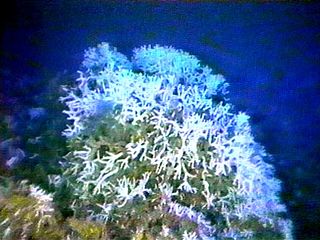
Oculina is a genus of colonial stony coral in the family Oculinidae. These corals are mostly found in the Caribbean Sea, the Gulf of Mexico and Bermuda but some species occur in the eastern Pacific Ocean. They occur at depths down to 1000 metres.
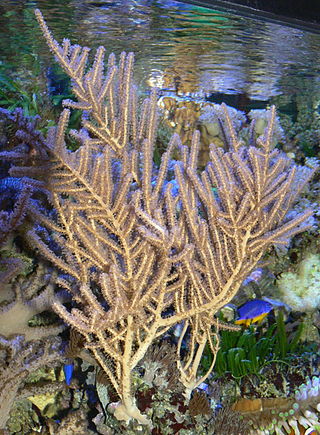
Holaxonia is a suborder of soft corals, a member of the phylum Cnidaria. Members of this suborder are sometimes known as gorgonians and include the sea blades, the sea fans, the sea rods and the sea whips. These soft corals are colonial, sessile organisms and are generally tree-like in structure. They do not have a hard skeleton composed of calcium carbonate but have a firm but pliable, central axial skeleton composed of a fibrous protein called gorgonin embedded in a tissue matrix, the coenenchyme. In some genera this is permeated with a calcareous substance in the form of fused spicules. Members of this suborder are characterized by having an unspiculated axis and often a soft, chambered central core. The polyps have eight-fold symmetry and in many species, especially in the families Gorgoniidae and Plexauridae, contain symbiotic photosynthetic algae called zooxanthellae. These soft corals are popular in salt water aquaria.
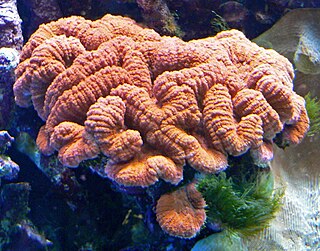
Lobophyllia, commonly called lobed brain coral or lobo coral, is a genus of large polyp stony corals. Members of this genus are sometimes found in reef aquariums.

Astrocoeniidae is a family of stony corals. The family is distributed across the tropical and subtropical oceans worldwide.
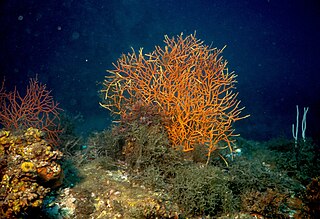
Leptogorgia is a genus of soft coral in the family Gorgoniidae. The genus has a widespread distribution with members being found in the eastern Atlantic Ocean from Western Europe to South Africa, the Mediterranean Sea, the Atlantic coasts of North and South America, the Antilles and the Pacific coast of America. Species are found in both shallow and deep waters.

Dendrophylliidae is a family of stony corals. Most members are azooxanthellate and thus have to capture food with their tentacles instead of relying on photosynthesis to produce their food. The World Register of Marine Species includes these genera in the family:

Balanophyllia is a genus of solitary corals in the order of stony corals.
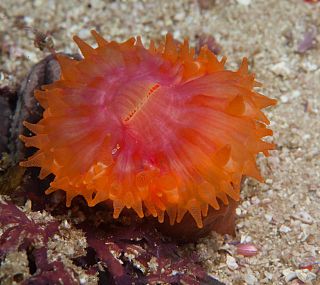
Caryophyllia is a genus of solitary corals in the family Caryophylliidae. Members of this genus are azooxanthellate and are found in the North Atlantic Ocean and the Mediterranean Sea at depths down to 2,670 metres (8,760 ft).

Stylasteridae is a family of hydrozoans.

Stylaster is a genus of hydroids in the family Stylasteridae.

Leptopsammia is a genus of stony cup corals in the family Dendrophylliidae. Members of this genus are found at depths down to about 900 metres (3,000 ft). They are azooxanthellate, meaning that they do not contain symbiotic photosynthetic algae as do many species of coral.

Merulinidae is a family of reef-building stony corals.

Dendrophyllia is a genus of stony cup corals in the family Dendrophylliidae. Members of this genus are found at depths down to about 900 metres (3,000 ft). They are azooxanthellate corals, meaning that they do not contain symbiotic photosynthetic dinoflagellates as do many species of coral.

Turbinoliidae is a family of reef building stony corals.

Flabellum is a genus of marine corals belonging to the family Flabellidae. These are a diverse group of azooxanthellate corals with about 190 species, 47 of which are extant. They are exclusively solitary corals and many are deep water species.

Flabellidae is a family of marine corals. It consists of the following genera:

Heterocyathus is a genus of coral of the family Caryophylliidae.

Desmophyllum is a genus of cnidarians belonging to the family Caryophylliidae.

Coenocyathus is a genus of cnidarians belonging to the family Caryophylliidae.

Endopachys is a genus of corals belonging to the family Dendrophylliidae.




















